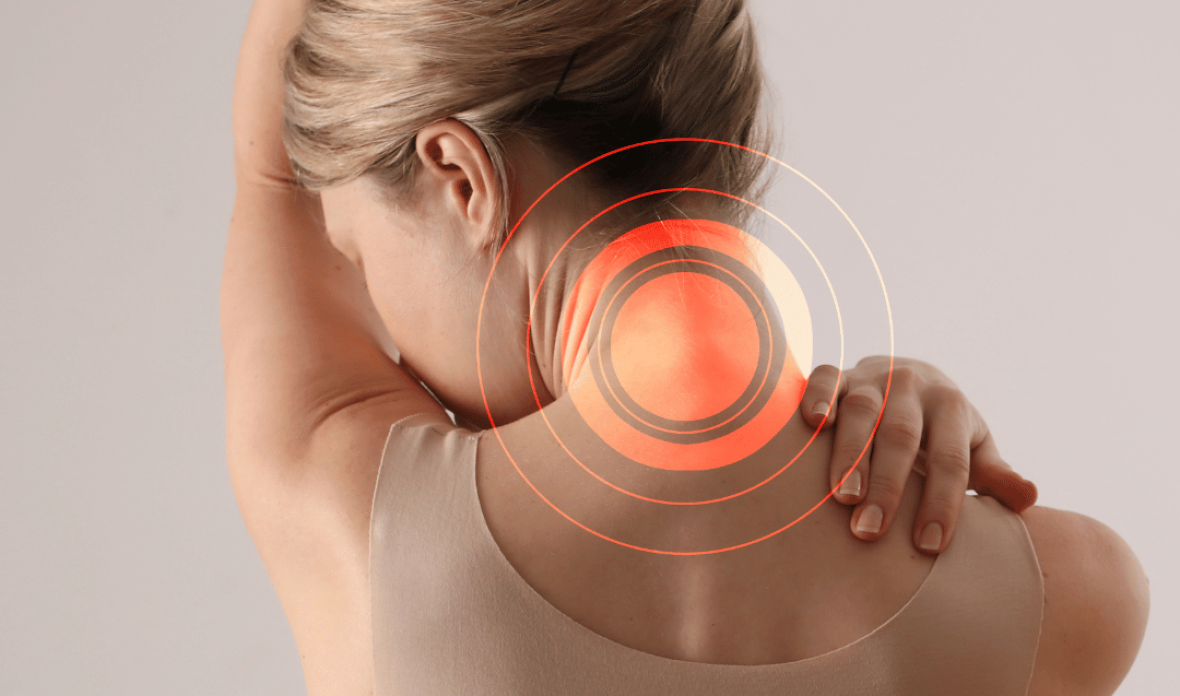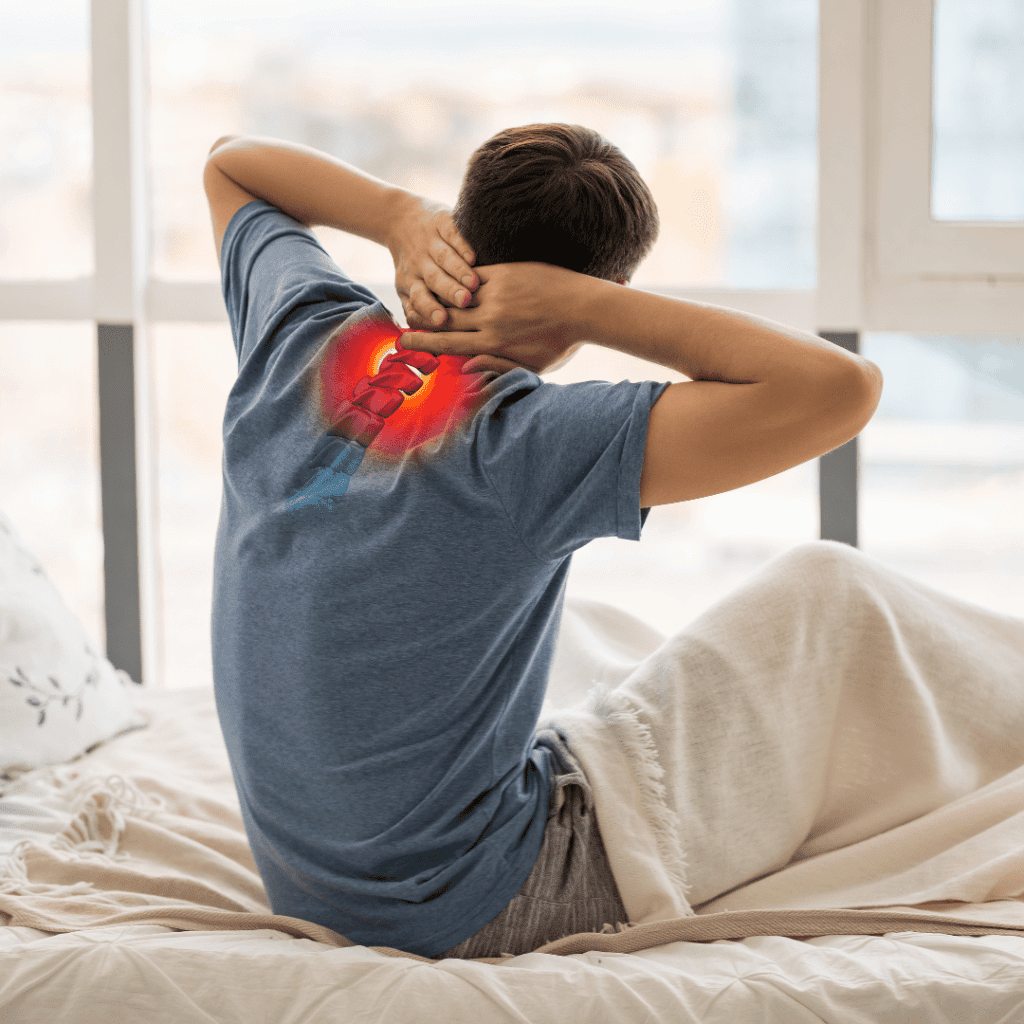Cervical Spine Stenosis

Other Case Studies
Book a Consultation:



History
A 27-year-old male office worker with a sedentary job presented with chronic neck pain, numbness, and tingling in both hands for eight months, progressively worsening with prolonged sitting, screen use, and neck flexion.
His NPRS score was 8/10. He also reported occasional hand weakness, difficulty gripping objects and stiffness in the neck. The pain was primarily localized to the cervical spine with radiation to the upper limbs and symptoms were temporarily relieved by postural adjustments and stretching. Over time, he also experienced mild dizziness and Headache. His medical history was unremarkable, and he had no family history of spinal diseases.
Evaluation
On evaluation, the patient exhibited reduced cervical range of motion and tenderness over the lower cervical spine. Neurological examination revealed mild muscle weakness (4/5) in shoulder abduction,wrist extension and hand grip, hyperreflexia in the upper limbs. Reduced sensation in the C6-C7 dermatomes , affecting the thumb, index, and middle fingers.
Spurling’s test was positive exacerbating radicular symptoms upon cervical compression.


MRI of the cervical spine showed moderate spinal canal stenosis at C5-C6, (7.5mm) caused by a herniated disc and ligamentum flavum hypertrophy. X-rays revealed loss of cervical lordosis and disc space narrowing at C5- C6 likely due to poor posture.
Treatment
Weeks 1-2
During the initial phase, the primary focus was on pain management and inflammation control through heat/ice therapy and accelerated healing techniques while implementing ergonomic corrections at work. Adjustments included optimizing chair height, utilizing a standing desk, and maintaining a neutral spine position to reduce strain on the cervical spine. To alleviate spinal stress, the patient was encouraged to perform active range-of-motion exercises for the neck every 30 minutes. Additionally, gentle soft tissue manipulation, neck stretches (levator scapulae stretch), and chin tucks (10 repetitions, five times per day) were incorporated to promote muscle relaxation and enhance cervical stability without exacerbating symptoms.

Weeks 3-4
This phase emphasized progressive mobility and strengthening exercises to improve postural control and spinal support. The rehabilitation program included resistance band training for the neck and shoulders, scapular retraction exercises, and core stabilization workouts to enhance muscular endurance and spinal alignment. Neuromuscular training was introduced to improve balance and proprioceptive awareness, addressing mild gait instability and promoting better coordination.
Weeks 5-6
The rehabilitation program advanced to functional strength and endurance training, incorporating dynamic cervical mobility drills, advanced stability exercises (such as plank variations and controlled resistance training), and postural retraining to reinforce optimal movement patterns. The patient was encouraged to maintain proper spinal mechanics during daily activities and progressively increase exercise intensity while avoiding excessive strain on the cervical region.
Weeks 7-8
The final phase focused on achieving full functional recovery and establishing long-term preventive strategies. The patient transitioned to self-directed exercise, continued ergonomic adherence, and lifestyle modifications, including periodic movement breaks and mindful posture habits to reduce spinal stress. Ongoing core and cervical strengthening routines were recommended to prevent recurrence and maintain spinal health, with regular follow-ups to assess progress and reinforce rehabilitation strategies.
History
The pain was primarily localized to the cervical spine with radiation to the upper limbs and symptoms were temporarily relieved by postural adjustments and stretching. Over time, he also experienced mild dizziness and Headache. His medical history was unremarkable, and he had no family history of spinal diseases.
Evaluation
On evaluation, the patient exhibited reduced cervical range of motion and tenderness over the lower cervical spine. Neurological examination revealed mild muscle weakness (4/5) in shoulder abduction,wrist extension and hand grip, hyperreflexia in the upper limbs. Reduced sensation in the C6-C7 dermatomes , affecting the thumb, index, and middle fingers.
Spurling’s test was positive exacerbating radicular symptoms upon cervical compression.
MRI of the cervical spine showed moderate spinal canal stenosis at C5-C6, (7.5mm) caused by a herniated disc and ligamentum flavum hypertrophy. X-rays revealed loss of cervical lordosis and disc space narrowing at C5- C6 likely due to poor posture.
Treatment
Weeks 1–2
During the initial phase, the primary focus was on pain management and inflammation control through heat/ice therapy and accelerated healing techniques while implementing ergonomic corrections at work. Adjustments included optimizing chair height, utilizing a standing desk, and maintaining a neutral spine position to reduce strain on the cervical spine. To alleviate spinal stress, the patient was encouraged to perform active range-of-motion exercises for the neck every 30 minutes. Additionally, gentle soft tissue manipulation, neck stretches (levator scapulae stretch), and chin tucks (10 repetitions, five times per day) were incorporated to promote muscle relaxation and enhance cervical stability without exacerbating symptoms.
Weeks 3–4
This phase emphasized progressive mobility and strengthening exercises to improve postural control and spinal support. The rehabilitation program included resistance band training for the neck and shoulders, scapular retraction exercises, and core stabilization workouts to enhance muscular endurance and spinal alignment. Neuromuscular training was introduced to improve balance and proprioceptive awareness, addressing mild gait instability and promoting better coordination.
Weeks 5–6
The rehabilitation program advanced to functional strength and endurance training, incorporating dynamic cervical mobility drills, advanced stability exercises (such as plank variations and controlled resistance training), and postural retraining to reinforce optimal movement patterns. The patient was encouraged to maintain proper spinal mechanics during daily activities and progressively increase exercise intensity while avoiding excessive strain on the cervical region.
Weeks 7–8
The final phase focused on achieving full functional recovery and establishing long-term preventive strategies. The patient transitioned to self-directed exercise, continued ergonomic adherence, and lifestyle modifications, including periodic movement breaks and mindful posture habits to reduce spinal stress. Ongoing core and cervical strengthening routines were recommended to prevent recurrence and maintain spinal health, with regular follow-ups to assess progress and reinforce rehabilitation strategies.

